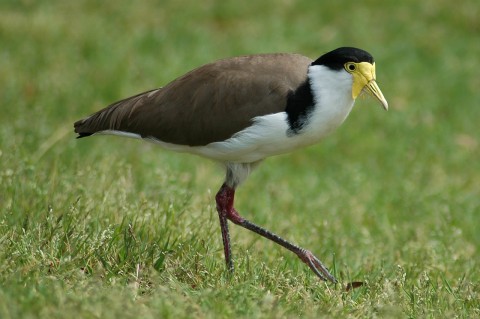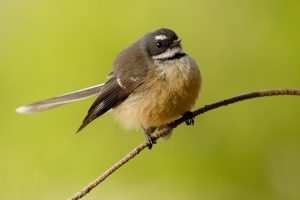A Bird with Too Few Lovers
Guest Blogger: Campaign Manager for the Masked Lapwing & Field Officer for Forest & Bird, Aalbert Rebergen

Masked Lapwing, Photo: B Donald
I’m not surprised that the spur-winged plover, or better: “masked lapwing” as it is called in Australia and the rest of the world, receives little mention in the ‘polls’ or receives praises from our VIPs.
Some may think that it’s not even a native and can’t qualify for “bird of the year”. But it is as much a New Zealand native bird as the welcome swallow, pied stilt, silvereye, white-faced heron (good on you Steve Braunias!) and several others.
It’s just an amazing bird and boy do kiwis hate them. People hate their “awful noise”; they can’t stand the fact that they defend their chicks vigorously against harriers and possibly magpies. Or that they are SO successful, SO Australian maybe……?
I love them! I love everything about them. OK, I am a bit of ‘lapwing-freak’: banded dotterels, wrybills, and also the lapwings, ‘gruttos’ (black-tailed godwit) and other grassland birds from my native country Holland.
So, maybe the masked lapwing makes me long for the green pastures below the dykes that used to be full of birds. Or maybe it reminds me of my time on Terschelling, one of the Friesian Islands. But really, the masked lapwing is just an amazing bird, arriving in New Zealand 75 or so years ago and now present in their 10,000s (if not 100,000s).
They’re everywhere, because they have found an empty paradise. They have nothing to compete with, and are easily able to defend themselves against ‘nasties’, they have food galore & empty paddocks waiting for a bird like the masked lapwing to arrive. Fonterra should use it as their company logo!
On my weekly cycle trips among the Wairarapa paddocks I see them sitting on their nests, sometimes in paddocks chocker-full of cows.
In one such paddock I watched all the grass being eaten around the nesting bird over a two to three week period, but the lapwing was still sitting on its eggs……., but then the farmer came with a tractor and raked the paddock. Even a successful bird as the masked lapwing can’t defend against that.
I often see pairs of lapwings with 2, 3 or 4 chicks, and if I happen to see them four or five weeks later they have same number of chicks. Why? Because they wholeheartedly defend their brood against predators.
We should feel inspired by masked lapwings rather than being annoyed of them. They are the real champions among our NATIVE birds. Vote for a winner – and then change the name to – the masked lapwing!
My bird of the century!

